Tortuguero Scenes, Plants, and Wildlife (continued)
16-18 December 2005
This page last updated 13 January 2006
This page will focus on the town of Tortuguero and the beach side. The town of Tortuguero is a very small, colorful beach community, with the tourist lodges found outside of town, or across the lagoon. The only way to get to Tortuguero is by boat or small plane. Look at the first and third maps on my "Costa Rica Home" page to see just where Tortuquero is. Basic information about Tortuguero and the area can be found at this Tortuguero National Park website. There is some old, broken down machinery in the middle of town. The story goes that these machines were left behind by an American with a lumber mill here, and when he abandoned Tortuguero, the natives dismantled much of the machinery and scattered parts all around in revenge.
Tortuguero National Park, located just south of the town, keeps the town's economy stable, and no longer dependent on fishing or logging, as was the means of living here before 1970. The Atlantic Green Sea Turtle nesting grounds are the main attraction, and that of the other six sea turtle species. This Costa Rica National Parks website provides nice summaries and information about each of Costa Rica's national parks, including Tortuguero National Park. Go to my "Costa Rica Birds" webpage listed below to see a number of the birds I saw at Tortuguero.
After lunch on our first day in Tortuguero, we walked south along the beach to town, which took about 15 minutes. The buildings and houses in town are mostly brightly colored, an influence from the original Puerto Rican immigrants, mostly people of African ancestry, that were brought to the east coast of Costa Rica to work the banana plantations. These immigrants where forbidden by law until the mid-1900s from moving to the Costa Rican Central Valley or western half of Costa Rica. This fact has resulted in a very limited black population elsewhere in Costa Rica, even though such migration and movement is no longer forbidden.
CounterData.com

finances Counter
All photos copyrighted by David L. Magney 2005, unless otherwise indicated.
Links to other Costa Rica photo pages
San Jose Area Photos
Poas Volcano National Park Area Photos
Braulio Carrillo National Park Area Photos
Tortuguero National Park Area Photos 2
Grecia Metal Church and Sarchi Photos
Arenal Volcano Area Photos
Jaco Area Photos
Cloud Forest Photos
Manuel Antonio National Park Photos
Rio Frio-Los Chiles Area Photos
Costa Rican Bird Photos
Costa Rican Butterfly Photos
Banana Plantation Photos
Costa Rica Home
Photos of the Tortuguero Area
These two bird statues are the welcoming symbols to tourists that you have indeed arrived in Tortuguero, located at the municipal docks on the lagoon side of town. On the right is how the town looks from the lagoon.
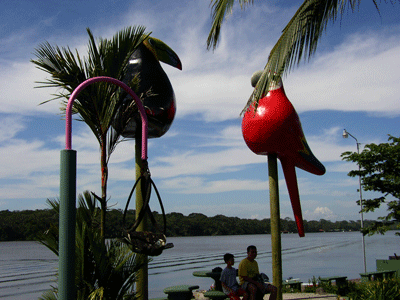
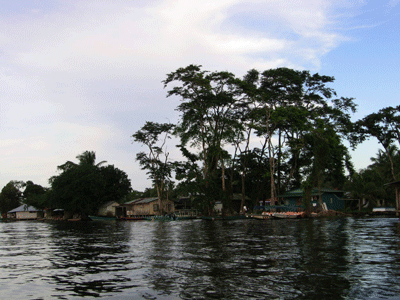
Here is the police station, seen from both the street and waterfront sides.
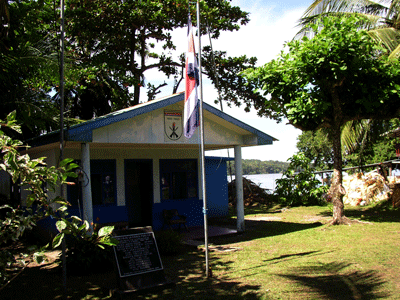
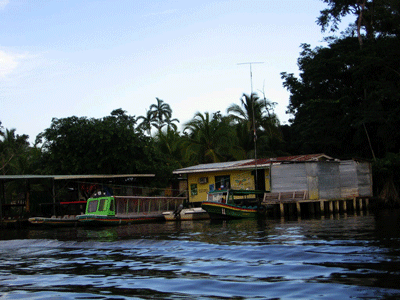
Here are some of the homes and businesses found in Tortuguero, including bakeries, grocery stores, and even an internet cafe.
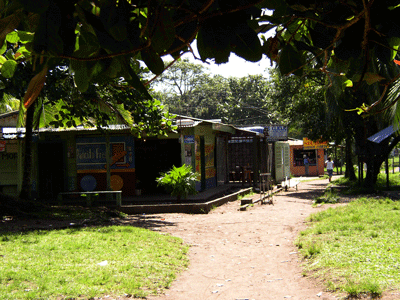
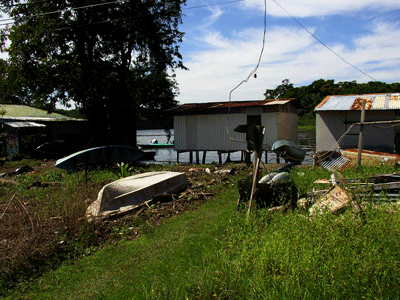
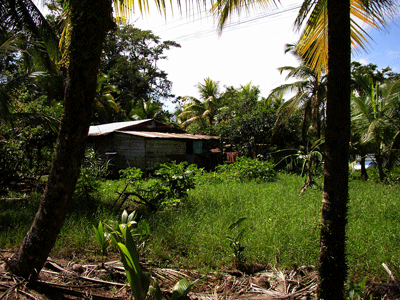
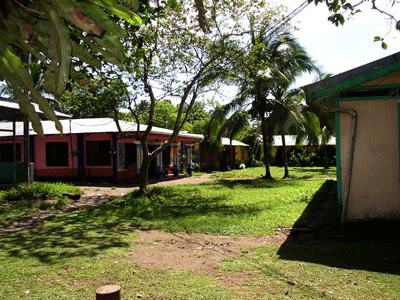
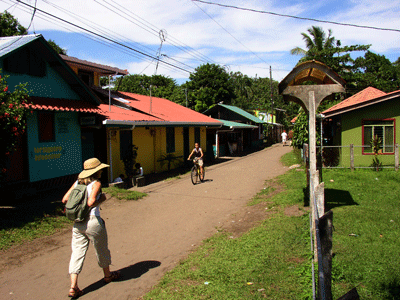
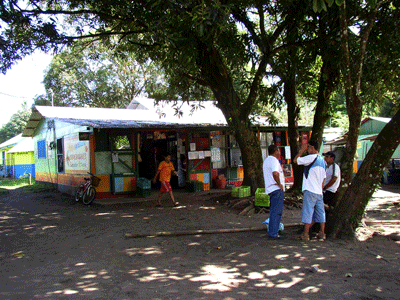
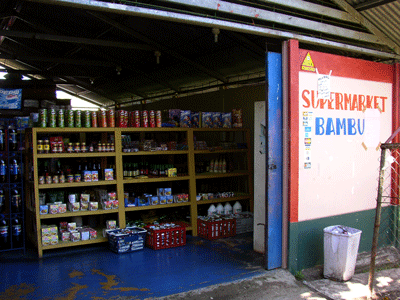
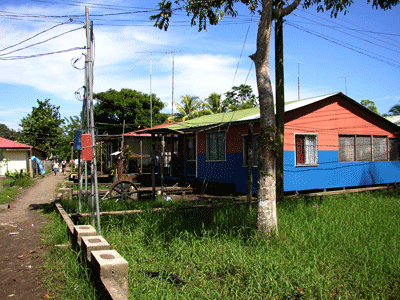
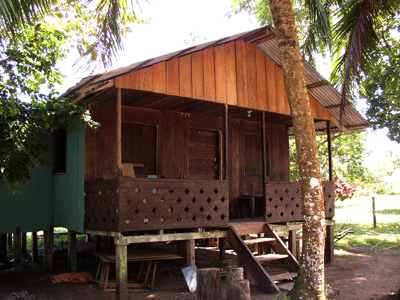
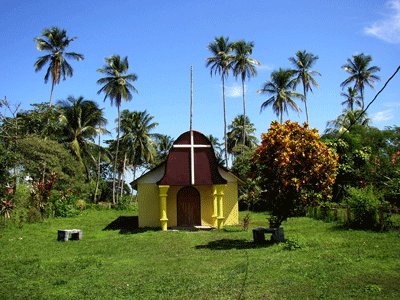
And here is where the town's water comes from.
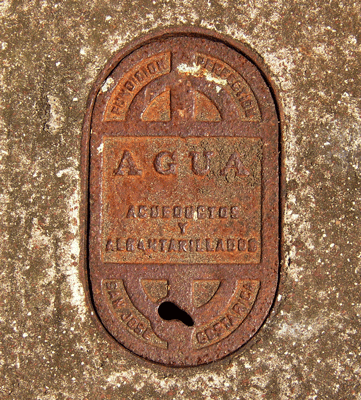
The beach sand is dark, or a black-sand beach, as viewed here looking both north and south. We were warned emphatically that we should NOT swim in the ocean, due to strong rip-tides and stingrays. The surf looked calm, but we obeyed our master.
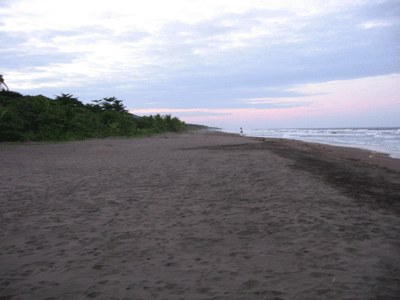
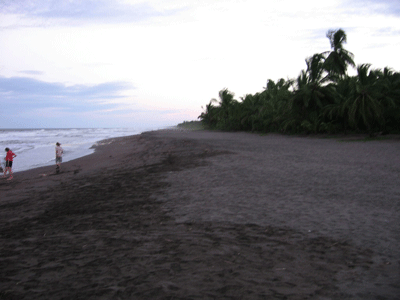
At night we walked up the beach. While we knew that we would not find the Green Sea Turtle coming ashore to lay her eggs, we were surprised that they were hatching and the hatchlings making their short but treacherous journey to the ocean. A German couple showed us a nest with three baby turtles.
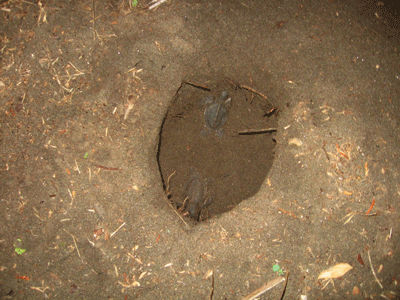
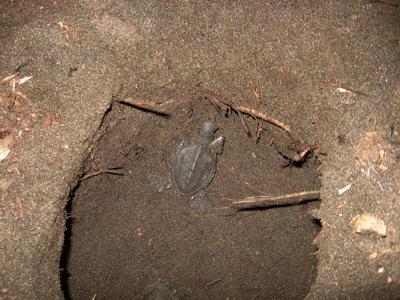
This nest was straight out from our lodge, at the edge of the Coconut Palm trees and the beach. We followed one turtle as it made a beeline for the ocean.
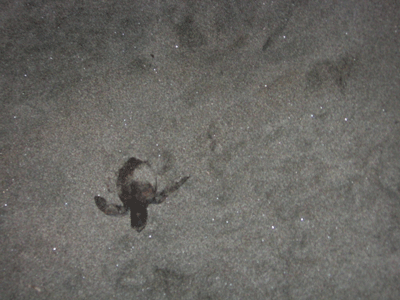
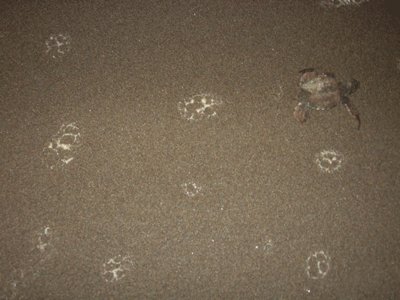
We also found an old nest, with hatched eggs, or where they robbed by a predator?
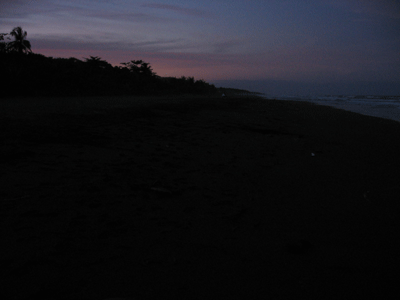
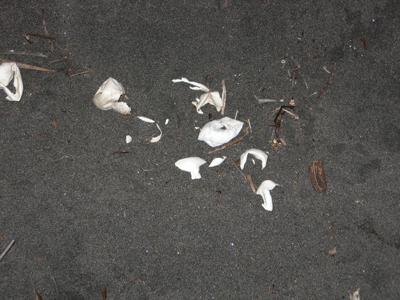
We found a night-heron prowling the beach for baby turtles in the moonlight.
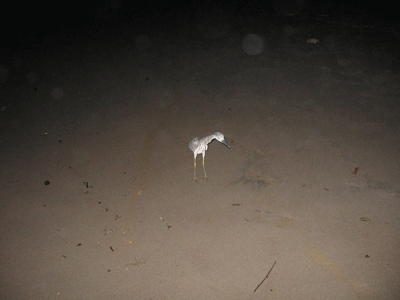
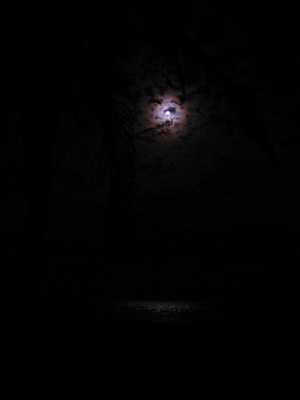
In the morning we found many tracks in the sand left behind by the baby turtles that made their way from their nest to the ocean, not to return for 25 years, if they survive to maturity.
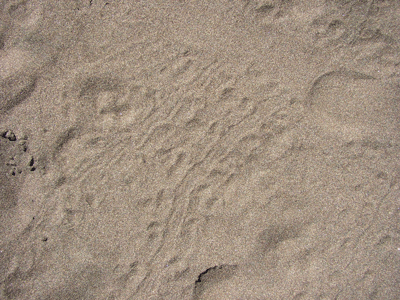
The most common plant on the beach was this Beach Morning-glory (Ipomoea pes-caprae) - Morning-glory family (Convolvulaceae).
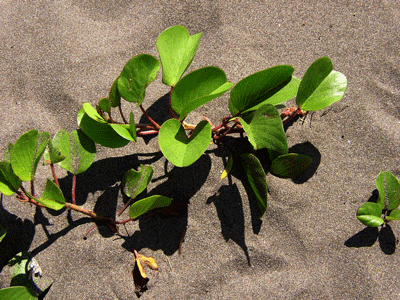
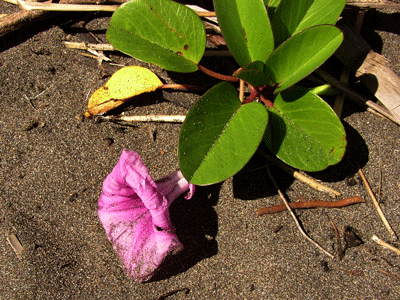
Along one of the canals inland was a Canadian research station.
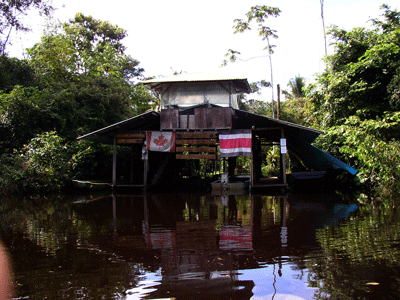
Trees of various species were distinct along the banks of the lagoon and canals.
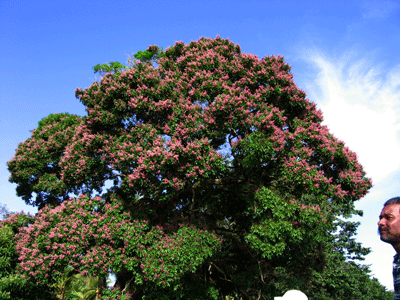
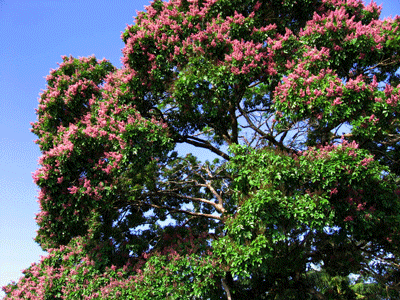
Tree Poppy (Bocconia frutescens) - Poppy Family (Papaveraceae). B. frutescens is a small tree/large shrub native to Central and South America and the West Indies, in areas that are typically warm and humid with average annual rainfall amounts ranging from 40-80+ in (100-200+ cm) and average temperatures ranging from 50-86+ F (10-20+ C) in January to 68-86+ F (20-30+ C) in July. It is often found in disturbed sites, such as along roads and in secondary forests, such as seen here along the Tortuguero Lagoon.
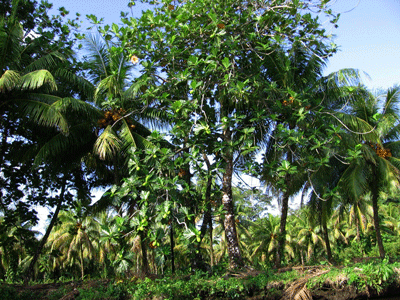
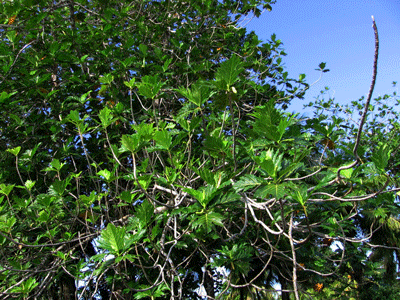
These wetland trees growing in Tortuguero National Park exhibit buttressing, the physiomorphic feature of the trunk having flanges to roots outward from the trunk, to support their weight in saturated soil conditions typically found in wetlands.
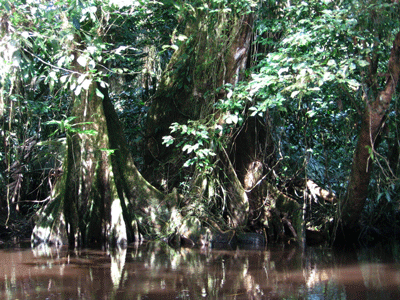
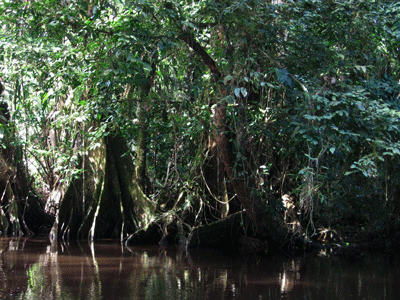
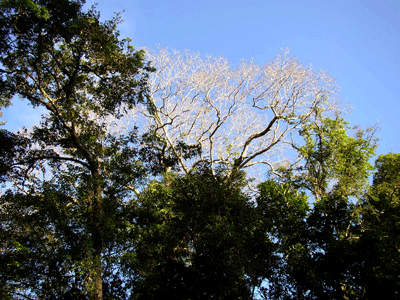
Nighttime also brought out the frogs, such as this beautiful Gaudy Leaf Frog or Rana Calzonudo(Agalychnis callidryas).
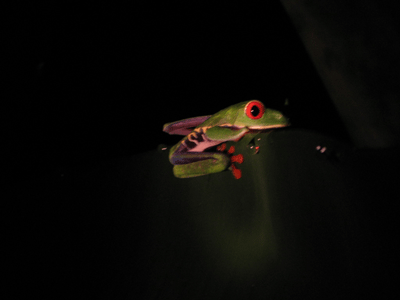
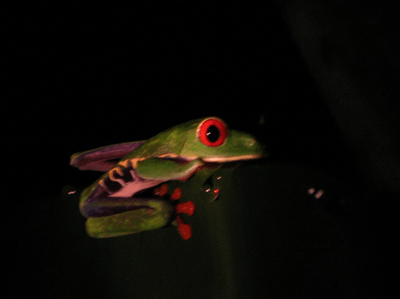
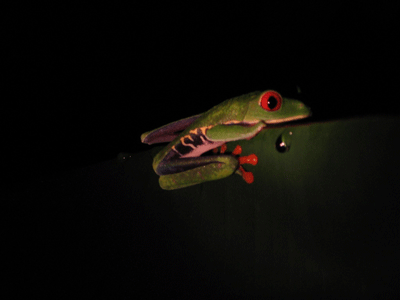
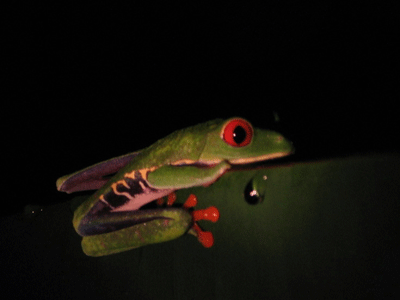
Including this Poison-Arrow Frog (photo by Andres Quiros).
-AQuir.gif)
Costa Rica Home
Photography Home Page
Photography Site Map
DMEC Home








































-AQuir.gif)